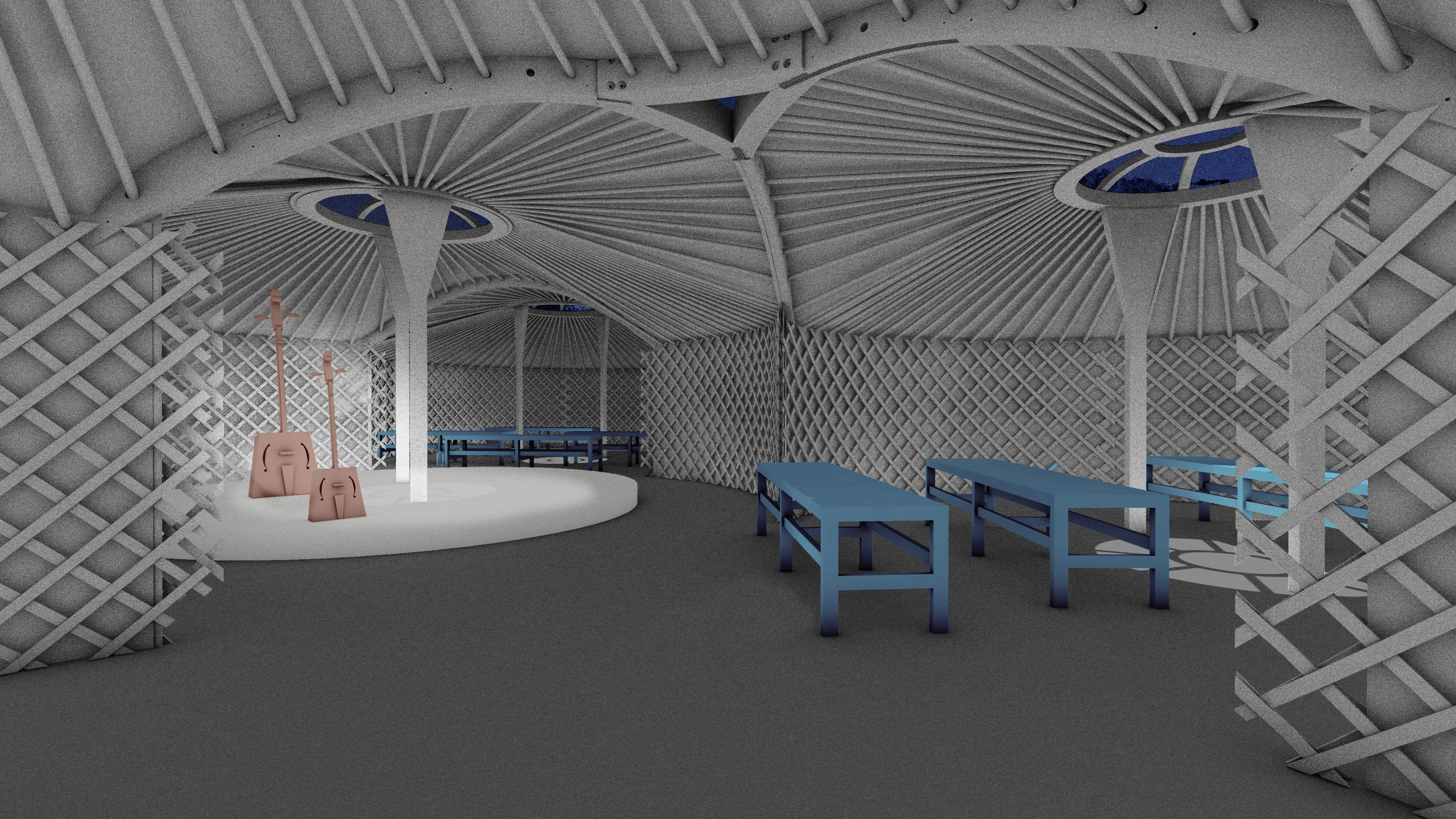
Expanding Gers, Encompassing Neighbors
For millennia, Mongolians have used gers as their homes. These mobile, collapsable, and sturdy structures have served the historically nomadic culture to house the social unit of the immediate family. The social benefits of the Ger for nomadic lifestyles does not extend to the sedentary life many Mongolians are increasingly forced into. The recent increase in the magnitude and frequency of catastrophic winters in Mongolia have destroyed many herds and thus the livelihoods of nomadic families. In the last decade, many families have moved with their ger, and often little else, to the outskirts of Ulaanbaatar with hopes of access to education and job opportunities.
Nomadic culture has kept the family unit in relative isolation as is exemplified by the lack of a word for ‘community’ in the Mongolian language. The ger typology supports this isolation through its autonomous structure and low occupant capacity. This isolation is maintained in densely populated Ger District of Ulaanbaatar through fences built to claim property.
The lack of spaces for large gatherings, especially in the -40° Celsius winters, contributes to the relative social isolation and thus lack of a community network. While all Mongolians are legally entitled to 750 square meters of land, they often lack the wealth to develop it themselves. This project proposes a simple and cost efficient way for owners of gers to connect them together through the addition of arch and vault components to the ger-kit. These components benefit from the advantages of the ger - easy to assemble, disassemble, and transport. There is no intended programmatic use for the newly combined gers but simply the opportunity for extremely low-cost long span spaces utilizing the existing housing typology.




This project proposes low cost components and processes where residents can manufacture and sell the components themselves.





